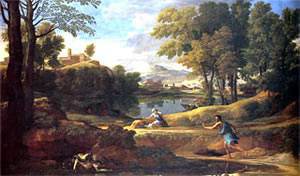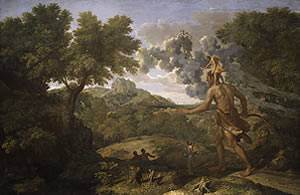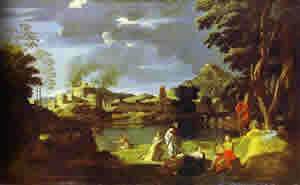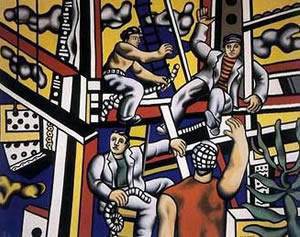
Nicolas Poussin: “Landscape with a man killed by a snake”

Blind Orion Searching for the Rising Sun”

Landscape with Orpheus and Eurydice
“POUSSIN AND NATURE: ARCADIAN VISIONS”
The Metropolitan shows some of the best landscapes by French master Nicolas Poussin (1594-1665)
New York, Metropolitan Museum of Art, February 12 – May 11, 2008
]]>
Arguably the greatest master of the French baroque painting, Nicolas Poussin (1594-1665) was also one of the most important masters of the Western landscape painting. His lyrical, even poetic landscapes have a great influence in later masters, not only the Barbizon School painters as Corot, but also in the impressionist and post-impressionist painters as Manet or Cézanne. Now, the Metropolitan Museum of Art host a landmark exhibition featuring the most important landscapes ever painted by Poussin
Exhibition Overview and Highlights
Poussin and Nature: Arcadian Visions will be a revelation to those who think of Poussin primarily as the master of complex, figurative compositions and the illustrator par excellence of ancient history, mythology, and the Bible. The exhibition will demonstrate that he was also one of the great painters of landscape, and that these paintings have had a profound impact on the course of European art.
Nicolas Poussin was born in the market town of Les Andelys, on the Seine, about 25 miles from Rouen, in Normandy. His family – said to have descended from noble stock – was not well off, and little is known of his early years. He seems to have been schooled in Latin and the classics, an experience that left an indelible mark on all his work. As a young man, Poussin made his way to Paris, and then to Rome, eventually establishing himself in both cities as a history painter and setting a new standard for classical painting.
From the outset, Poussin was as concerned with landscape settings as with narrative subjects. An ardent student of nature, he transformed the genre to suit his elevated notion of the Grand Manner. The mere transcription of visual experience – landscape as an imitation of the world around us – did not interest him. He did not paint topographical views, and identifiable sites in his work are rare. In his landscapes we encounter nature reconfigured and ennobled – not as it is in everyday life, but as we might imagine it to be. Examples of this in the exhibition will be Landscape with John of Patmos, Landscape with Ashes of Phocion, Landscape with a Man Killed by a Snake, Landscape with Orpheus and Eurydice, Landscape with Three Men, Landscape with a Calm, Landscape with a Storm, Blind Orion Searching for the Rising Sun, and Spring: Adam and Eve and Summer: Ruth and Boaz from the four Seasons series in the Louvre.
Poussin devoted himself to landscape from his earliest years in Rome, often making excursions together with fellow artist Claude Lorrain to the Roman Campagna to draw from nature. Most of the 40 drawings in the exhibition were created en plein air and are by Poussin and his contemporaries, some anonymous. Drawings such as Poussin’s Landscape with a Burning Fortress will demonstrate how he used the medium in composing his great paintings.
Follow us on:


